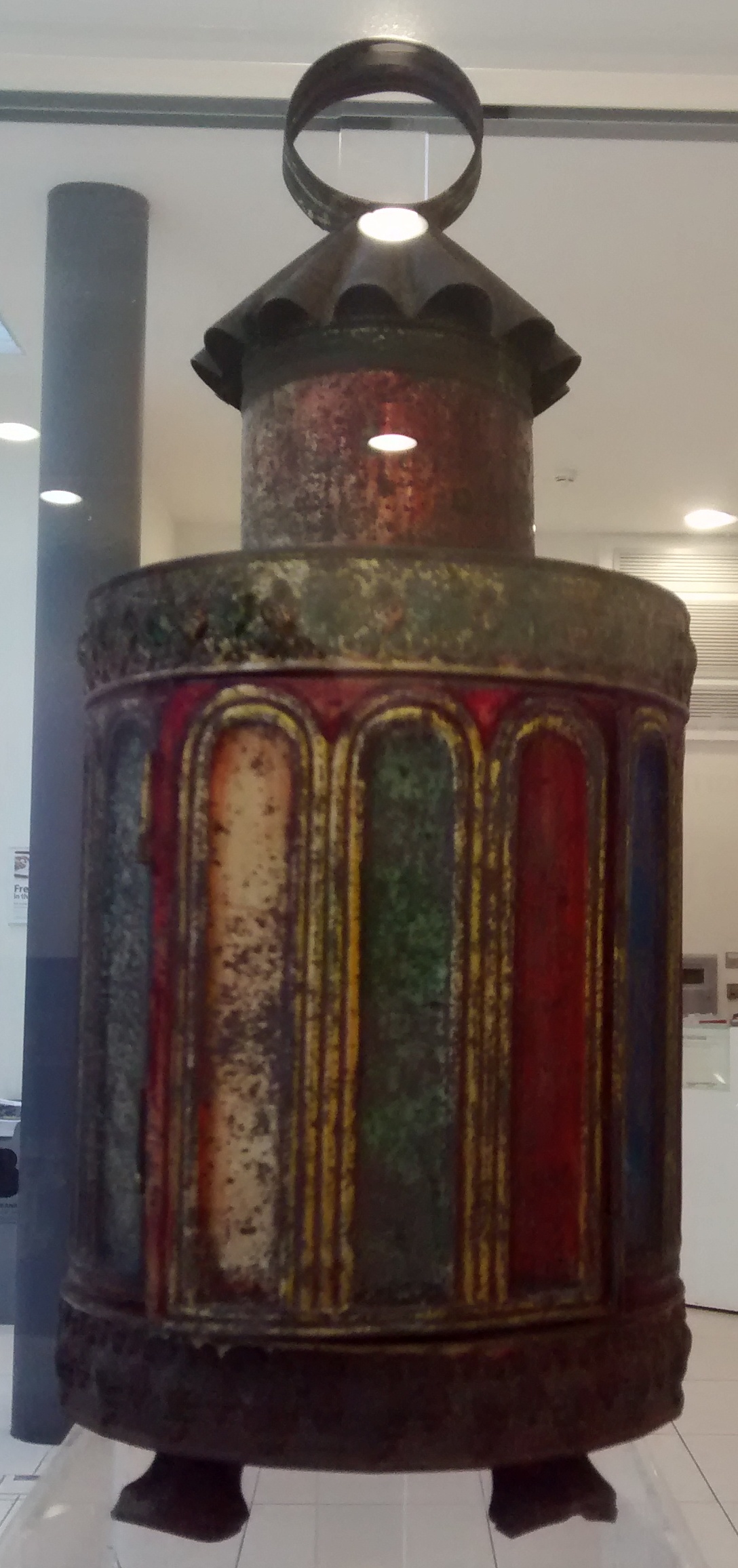
Easter fun at the museums!
Exhibitions, trails and activities; six fun things for all the family to enjoy at The Beaney and...
Beyond the black strips of curtain is another world, a walk-in cabinet of curiosity. A severed dummy head on a plinth, crow in taxidermy case, back-lit sepia photographs. Mirrored objects reflect moving meteorites and a little girl in a Red Riding Hood coat. It is an uncanny space, strobing and crackling, disturbing and disorientating, and yet strangely reverent. These objects, in their selection and isolation, have become relics and icons. The accompanying soundtrack requires focus. My ears adjust. I begin to squint and peer. It is like trying to eavesdrop in a busy laundrette.
The voices are linked to a film that appears like a bubble in the installation: an interview, a visit to a shambolic shrine. A man in a stacked-up shack on the beach, a hermit of sorts, occupying a series of linked boxes. The man’s living space is filled with statuary, photos of papal encounters, messiahs detected in the swirling striations of river stones and beach pebbles. A cluttered space, captured by a lens, recorded and miniaturised and made viewable inside another cluttered space, another shrine.

When I emerge, blinking, from the exhibition, I notice the display of magic lanterns in a case by the stairwell. The toy ones do look like lanterns: decorative tin cubes and cylinders, painted in stripes, birdcages panelled in stained glass. Designed to hold miniaturised worlds, to create illusions of reality, to capture faraway and impossible places, scenes, figures – they would have felt magical, conjuring the real and imagined, the sacred and supernatural.

I know where to look next. In the Explorers & Collectors room is a small earthenware shrine that has caught my eye many times. Returning to it, I read the explanatory label. The text on the shrine translates as: ‘fiction or reality, we revisit our ancestors with these figures’. It’s a redacted Shenist folk temple, the sort of miniature shrine you could keep in your cupboard and visit at will, like the Roman household Lares. This part of the Beaney holds many little shrines, statuettes and figures of reverence. There are objects to reflect on and project into, polished surfaces that might contain the faces of gods and angels.

I start looking for idols, physical representations of the divine. Things are beginning to get Platonic: I am looking for ideal forms and seeing copies of them everywhere. And of course, I realise, kicking myself gently, this is a perfect example of Plato’s theory of forms (all these copies of copies of some ideal never seen) bumping up against Foucault’s heterotopia.
According to Foucault, some spaces exist that are both real and outside everyday ‘reality’. (Shrines achieve this: miniature portable ones even more so.) There are spaces of crisis, where society’s norms are overruled. There are virtual spaces, such as mirrors, which show spaces that are not real, but are in themselves tangible objects occupying real space. And there are spaces that bring together many other spaces, real and imagined, across time, such as galleries, libraries and museums.
The heterotopia is capable of juxtaposing in a single real place several spaces, several sites that are in themselves incompatible. Thus it is that the theatre brings onto the rectangle of the stage, one after the other, a whole series of places that are foreign to one another; thus it is that the cinema is a very odd rectangular room, at the end of which, on a two-dimensional screen, one sees the projection of a three-dimensional space…
Foucault, ‘Of Other Spaces, Heterotopias’
So when you visit the Beaney, and stand in a gallery, you are in a heterotopia. Go into the magic lantern exhibition, don those headphones and watch the film. Where are you now? Looking at a heterotopia, in a heterotopia, within a heterotopia. The space visited in the film, the jumbled shrine of collected objects, is a heterotopia. The magic lantern, like the cinema, presents a space that is not real (but represents a real space). It exists inside an installation, within a temporary exhibition, which, like a set of Russian dolls, is housed within the Beaney, the heterotopic uber-space.
The Beaney is full of relics, shrines and impossible objects. Gods and demons and idealised fantastical beasts. Reflections and interpretations and wild imaginings. Fiction or reality, we revisit our ancestors with these figures. That’s something to carry with me as I leave the heterotopia and stumble back into Canterbury High Street.

